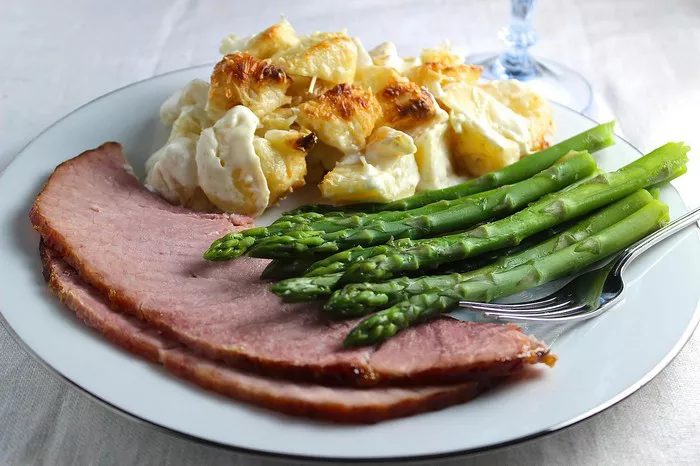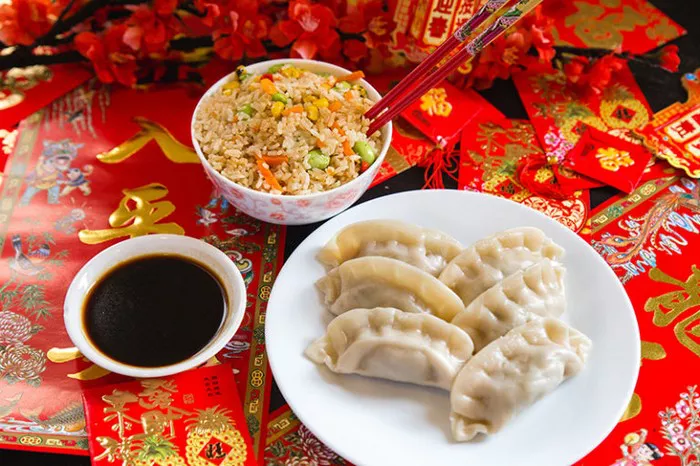As the arrival of spring paints the world in vibrant hues, the anticipation of Easter festivities brings with it a sense of renewal, joy, and togetherness. A cornerstone of Easter celebrations is the cherished Easter dinner, a time-honored tradition that gathers families and friends around the table to share in the spirit of the season. From succulent main dishes to delectable sides and delightful desserts, the Easter dinner table is a canvas of culinary delights. In this article, we delve into the most popular Easter dinner choices, highlighting the dishes that have stood the test of time and continue to grace our tables with warmth and flavor.
A Feast of Symbolism and Traditions
Easter dinner is not just a meal; it’s a reflection of cultural and religious symbolism. As a celebration of resurrection and new beginnings, Easter dinner often features dishes that symbolize rebirth, fertility, and the promise of the changing seasons. From lamb to eggs, the ingredients themselves tell stories of renewal and hope.
The Resplendent Star: Roast Lamb
At the heart of many Easter dinner tables, roast lamb takes center stage. Symbolizing the Lamb of God in Christian tradition, lamb embodies the themes of sacrifice and redemption. Roast lamb, whether seasoned with aromatic herbs or marinated in rich sauces, is a timeless choice that appeals to both tradition and taste.
Classic Choices: Ham and Pork
While lamb holds a prominent place, ham and pork also claim their spot as beloved Easter main dishes. Glazed ham, with its sweet and savory balance, has become an iconic centerpiece for Easter dinners. The salty-sweet flavors and the tender texture of ham resonate with the festive atmosphere, making it a popular choice for families to gather around.
Poultry Perfection: Roast Chicken or Turkey
For those seeking an alternative to lamb or ham, roast chicken or turkey offers a hearty and versatile option. While not as steeped in religious symbolism, these poultry choices are prized for their succulence and the comfort they bring to the Easter table. A well-prepared roast chicken or turkey, seasoned to perfection and accompanied by flavorful gravies, appeals to a wide range of palates.
The Heritage of Eggs
Easter and eggs are inseparable companions, symbolizing rebirth, fertility, and the beginning of new life. Eggs have been incorporated into various Easter dishes, each bearing its unique cultural significance.
Deviled Eggs: A popular appetizer, deviled eggs are hard-boiled eggs halved and filled with a mixture of the yolks, mayonnaise, mustard, and other seasonings. The name “deviled” derives from the use of spices and condiments that add a kick to the dish.
Scotch Eggs: A British favorite, Scotch eggs feature hard-boiled eggs encased in seasoned sausage meat, coated with breadcrumbs, and deep-fried or baked. The crispy exterior and savory interior make them a delightful addition to Easter spreads.
Accompaniments: Sides and Salads
No Easter dinner is complete without an array of sides and salads that complement the main dishes. These offerings not only enhance the flavor profile but also add variety and color to the meal.
Potatoes: Whether mashed, roasted, or scalloped, potatoes find their way onto Easter dinner tables in various forms. Their comforting nature and versatility make them a beloved choice.
Spring Vegetables: Celebrate the freshness of spring with a medley of seasonal vegetables. Asparagus, peas, carrots, and artichokes bring vibrant colors and flavors to the spread.
Salads: Light and refreshing salads, often featuring baby greens, fruits, nuts, and cheese, offer a palate-cleansing contrast to the hearty main dishes.
Sweets for the Sweet: Easter Desserts
Easter desserts are a delightful finale to the celebratory feast, often capturing the essence of the season through flavors and presentations.
Hot Cross Buns: These spiced, sweet buns adorned with a cross on top are a quintessential Easter treat. The cross symbolizes the crucifixion, while the spices evoke the exotic nature of the spices brought to Jesus.
Easter Cake: Whether in the shape of a lamb, a cross, or simply adorned with pastel-colored decorations, Easter cakes are a canvas for creativity. Carrot cake, with its warm spices and cream cheese frosting, is a perennial favorite.
Fruit Tarts and Pies: Fresh fruit tarts and pies celebrate the bounty of spring and are often adorned with vibrant berries and citrus fruits.
Easter Around the World: International Flavors
Easter dinner choices are not limited to one particular cuisine. Around the world, cultures infuse their unique flavors and traditions into their Easter feasts.
Italian: In Italy, lamb, often roasted with aromatic herbs, is a popular Easter choice. The meal may also include Easter breads, cheese, and various dishes highlighting regional ingredients.
Greek: Greeks celebrate Easter with lamb dishes like roasted lamb or “magiritsa,” a soup made with lamb offal and herbs. Greek Easter bread, known as “tsoureki,” is a sweet and braided treat adorned with red-dyed eggs.
Polish: “Babka,” a rich and sweet Easter bread, is a cherished Polish tradition. It comes in various flavors, from chocolate to fruit-filled, and is often enjoyed as dessert.
Mexican: In Mexico, “capirotada,” a bread pudding made with cinnamon, raisins, nuts, and cheese, is a popular Easter dessert. It’s a sweet and savory delight that brings families together.
The Joy of Sharing: Easter Dinner Tradition
While the specific dishes may vary, what remains constant is the joy of sharing a meal with loved ones. Easter dinner is a time to come together, celebrate traditions, and create new memories.
Conclusion
Easter dinner is not just a collection of dishes; it’s a reflection of heritage, symbolism, and culinary creativity. The most popular Easter dinner choices embody the spirit of the season, bringing together flavors that celebrate rebirth, renewal, and the warmth of togetherness. As families gather around the table to indulge in these cherished delights, they weave a tapestry of tradition and taste that echoes through generations. So, whether you opt for roast lamb, glazed ham, or a dish that resonates with your cultural background, let Easter dinner be a feast that not only nourishes the body but also nourishes the soul.


























